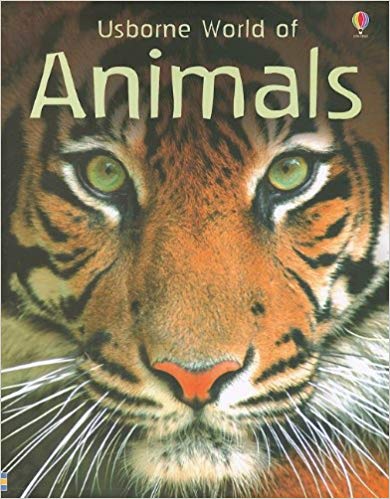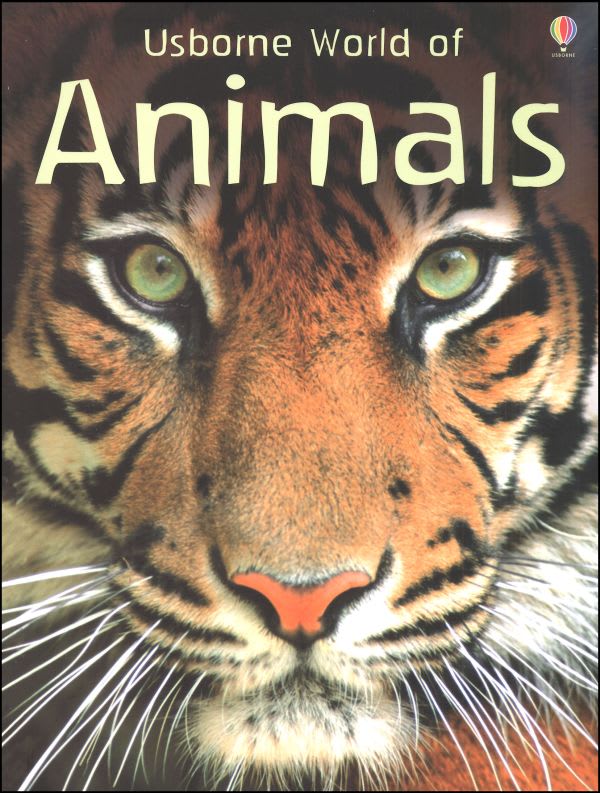Usborne World of Animals features gorgeous photos along with text in this 128-page book. The sections of text are brief enough to hold the attention of young learners, and the content is detailed enough for children up through about ages eight or nine.
"Internet links" included throughout the book direct you to an Usborne curated site where they maintain links on many topics from this and other books they publish. You identify the book, then look up links by page numbers within the book. This is much faster than typing in distinct URLs for each link.
The first section of the book is about animals in general. It covers topics like different skin coverings, such as hair, scales, and feathers. It discusses how different creatures see, hear, and communicate. And it also includes broader topics such as food chains, camouflage, conservation, and much more.
After this 24-page introductory section, the book presents animals by continents and has an additional section for ocean life. Children learn about animals within their broad habitats. For example, within the section on Asia, children learn about mammals that live in the Himalayan Mountains region: markhors (wild goats), pangolins (unusual mammals that are covered in scales), and snow leopards. Or they learn about wildlife in the Okavango Delta in Botswana, Africa: hippopotami, red lechwe (a type of antelope), lilac-breasted rollers (birds with bright, colorful feathers), and black herons. The selection of animals includes both the familiar and the exotic.
Near the back of the book are two more brief sections that children might enjoy: Animal Facts and Animal Records. Animal Facts tell us things such as, “Vampire bats drink around 70% of their body weight in blood every night. They get this blood from sleeping animals.” Animal Records tell us which animals are biggest, smallest, deadliest, and fastest, as well as which ones have the biggest body parts.
As with most Usborne nature books, Usborne World of Animals is beautiful, informative, and fascinating.










